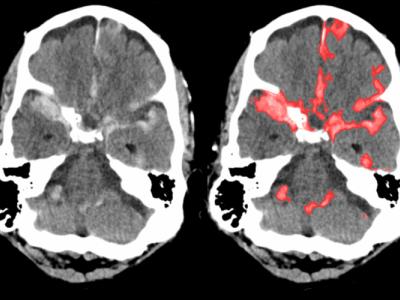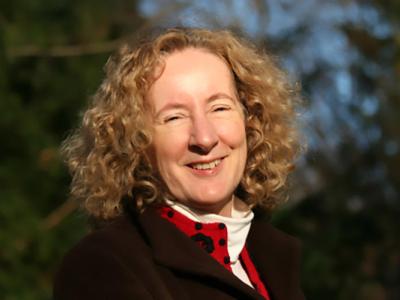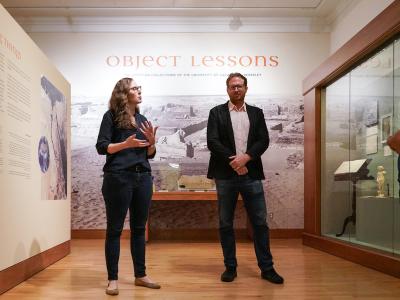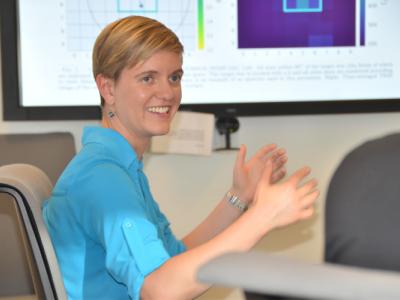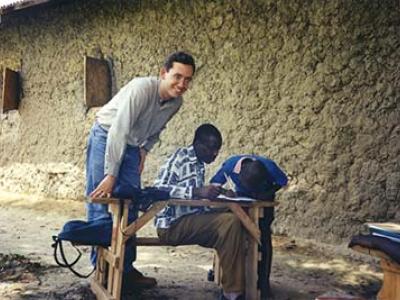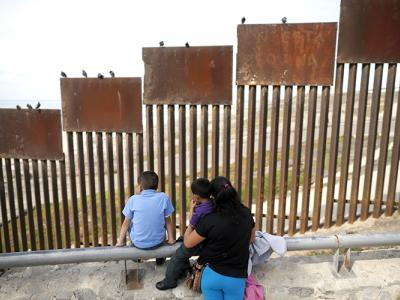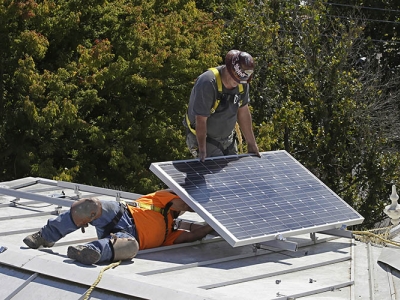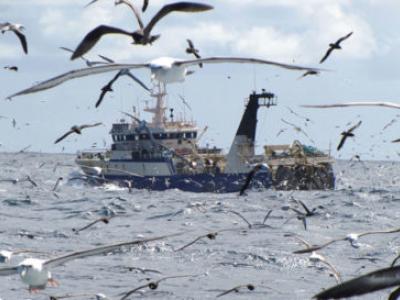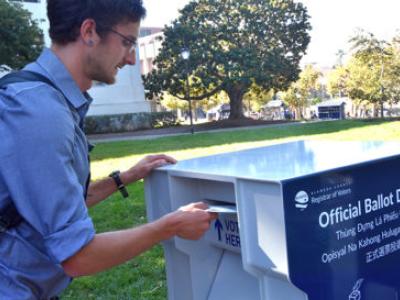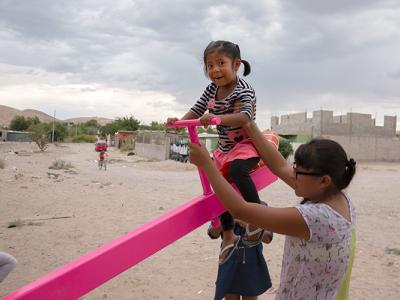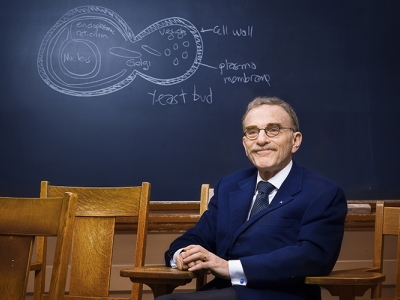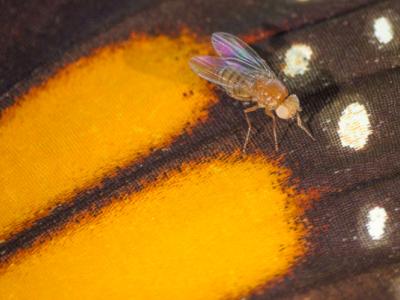A computer algorithm developed by scientists at the University of California, San Francisco (UCSF), and UC Berkeley bested two out of four expert radiologists at finding tiny brain hemorrhages in head scans — an advance that one day may help doctors treat patients with traumatic brain injuries, strokes and aneurysms.
Research News
Learn more about UC Berkeley's researchers and innovators.
Showing 1473 - 1488 of 3461 Results
K. Birgitta Whaley, a UC Berkeley professor of chemistry and co-director of the Berkeley Quantum Information and Computation Center, has been appointed to the U.S. President’s Council of Advisors on Science and Technology (PCAST), the White House announced today (Tuesday, Oct. 22).
A new exhibit, Object Lessons: The Egyptian Collections of the University of California, Berkeley joins papyrus texts from the library’s Center for the Tebtunis Papyri, or CTP, with ancient objects from UC Berkeley’s Phoebe A. Hearst Museum of Anthropology — including a 4,000-year-old statue from the Great Pyramids of Giza, papyrus fragments from Sophocles’ lost play Inachus, and an 8-foot mummified crocodile from a reptilian god’s tomb. Side by side, the materials cast color and context upon each other, offering a wider, brighter peek into life in antiquity.
California Gov. Gavin Newsom today (Thursday, Oct. 17) announced the debut of the nation’s first statewide earthquake early warning system that will deliver alerts to people’s cellphones through an app developed at the University of California, Berkeley. The mobile phone app, MyShake, can provide seconds of warning before the ground starts to shake from a nearby quake — enough time to drop, cover and hold on to prevent injury.
Courtney Dressing’s ongoing search for planets around other stars has won her a prestigious Packard Fellowship in Science and Engineering. Dressing, a UC Berkeley assistant professor of astronomy, is one of 22 early career scientists and engineers nationwide who will receive $875,000 each over five years to pursue their research. The new fellows were announced this week by the David and Lucile Packard Foundation.
UC Berkeley economist Ted Miguel awoke before dawn on Monday, Oct. 14, to the buzzing of dozens of texts and emails. As he blearily scanned his smartphone, a scenario that virtually every scholar and scientist dreams about gradually came into focus.
Morgan G. Ames, assistant adjunct professor at the School of Information, explores the rise and fall of the One Laptop Per Child (OLPC) project in her new book, The Charisma Machine: The Life, Death, and Legacy of One Laptop Per Child. Over the course of the book, Ames examines the utopian visions that fueled the project and its failures in understanding the role of technology in education.
When President Donald Trump was elected in 2016, he vowed to build a “big, beautiful wall” between the United States and Mexico. But the more than 700 miles of barriers already in place at the border — mostly built in the 1990s and early 2000s — have already created more harm than good, says Wendy Brown, a professor of political science at UC Berkeley.
This week, the Pacific Gas and Electric Company took the unprecedented step of cutting power to nearly 750,000 Northern California customers, including much of the UC Berkeley campus, in an effort to mitigate the risk that active transmission lines could spark a wildfire during dry and windy conditions. Berkeley News spoke with Alexandra “Sascha” von Meier, Director in the California Institute for Energy and Environment’s Electric Grid program area, about the risks posed by the current energy grid and possible solutions moving forward.
Overfishing is a major problem for the world’s oceans, but a strategy adopted nearly 50 years ago has helped protect fisheries: giving nations exclusive rights to waters 200 miles offshore and letting them police their own fish stocks.
“There are a number of myths about elections that we’ve been hearing, saying that they are secure. And I want to shoot down two of those key myths,” says Barbara Simons, board chair of Verified Voting, in a talk called “Can we recover from an attack on our election?” that she gave for the annual Minner Distinguished Lecture in Engineering Ethics on Sept. 18.
NASA launches the Ionospheric Connection, or ICON, mission, putting into orbit a satellite built largely at UC Berkeley’s Space Sciences Laboratory to explore the dynamic region where Earth meets space, the ionosphere.
When UC Berkeley architect Ronald Rael took his bright pink teeter totters to the U.S.-Mexico border wall, he didn’t know what he and his team did next would go viral. He just wanted to create a moment where people on both sides of the wall felt connected to each other. “Women and children completely disempowered this wall for a moment, for 40 minutes,” says Rael. “There was a kind of sanctuary hovering over this event.”
On Sept. 17, UC Berkeley hosted the second annual Aging, Research and Technology Innovation Summit, a daylong event that brought together researchers, entrepreneurs, policymakers and health care workers to tackle some of the biggest questions in aging research. This year’s summit focused on the challenge of understanding and treating neurodegenerative diseases. Randy Schekman, a professor of molecular and cell biology at UC Berkeley, won the 2013 Nobel Prize in physiology or medicine. He spoke at the summit about Parkinson’s disease, touching on what we already know about the disease and new research efforts that are underway.
To save Earth’s stunning biodiversity, we need to set aside at least half the planet’s lands and oceans for conservation. That’s the argument made by naturalist and author E.O. Wilson in his 2016 book Half-Earth and also the inspiration behind the E.O. Wilson Biodiversity Foundation’s Half-Earth Day, an annual event that explores how conservationists of all stripes can make progress toward this lofty, but attainable, goal.
The fruit flies in Noah Whiteman’s lab may be hazardous to your health. Whiteman and his University of California, Berkeley, colleagues have turned perfectly palatable fruit flies — palatable, at least, to frogs and birds — into potentially poisonous prey that may cause anything that eats them to puke. In large enough quantities, the flies likely would make a human puke, too, much like the emetic effect of ipecac syrup.

